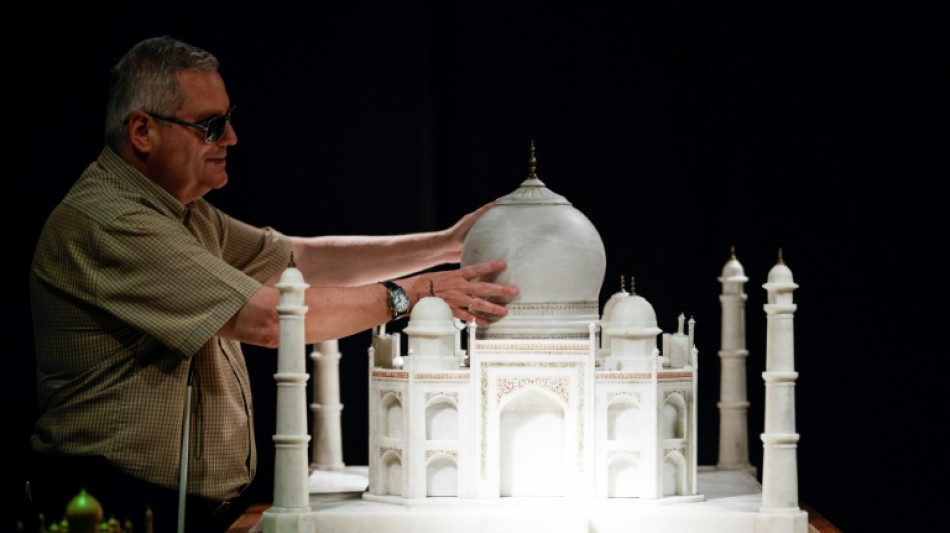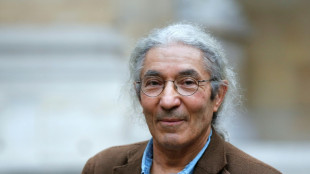

Museum where blind get to feel the world's wonders
With their fingertips, Marina and Jose Pedro pored over a small-scale model of Barcelona's Sagrada Familia church in an exhibition which allows the blind to discover some of the world's best-known monuments.
"There are just so many tiny details! And what a strange roof," enthused Jose Pedro Gonzalez as he explored the wooden replica of Gaudi's spectacular basilica.
Marina Rojas said that she "never imagined the Sagrada Familia like that".
"It's very surprising, because you get a general idea of what the monument is like, what the space inside is like," she added.
The Madrid Typhlological Museum -- from the Greek "tuphlos" meaning blind -- houses 37 reproductions of global monuments that are listed as world heritage sites.
It was set up in 1992 by ONCE, Spain's powerful national organisation for the blind which has 71,000 members.
Made of wood, stone, metal or resin, the models are accessible to all visitors -- whether blind, sighted or partially sighted -- giving them a hands-on, sensory experience of the architecture.
"There's no other place in the world with a museum like this," said guide Mireia Rodriguez, who is herself visually impaired.
"There are many other museums designed for visually impaired visitors, but they don't have this kind of collection."
ONCE runs a lottery and some very popular scratchcard games which bring in 2.5 billion euros ($2.7 billion) a year and pays the salaries of its 72,000 employees, six out of 10 of whom have some sort of disability.
The funds are also used for other investments, such as the museum, which in 2023 welcomed 16,000 visitors,
Besides the models, the museum also features artworks by people who are visually impaired and a display of tools and equipment used from the early 19th century until the 1980s to help blind people access culture, including books in Braille.
- 'Getting closer to culture' -
After wandering through a room housing models of Spain's best-known sights such as the Alhambra palace in Granada, Madrid's Royal Palace and the Santiago de Compostela cathedral, Rojas branded the exhibition "really marvellous".
Another room is filled with global landmarks such as the Taj Mahal, London Bridge, the Statue of Liberty, Rome's Colosseum, the Parthenon in Athens, the Eiffel Tower, the Kremlin and the Old City of Jerusalem to name but a few.
"No matter how much they explain to you, you can't really get a proper image of what it's like... and that creates a lot of frustration, so the fact there are spaces like this is fantastic," said Rojas, whose eyes can only see a bit of light.
"I wish there were more chances to touch such works of art," the 32-year-old said.
"Touch gives you a lot of information, even if most comes through sight, so it's very important to touch," she told AFP, her guide dog Boston standing at her side.
For curious hands, however, he is firmly out of bounds.
"Don't stroke me, I'm working," warns a message on his harness.
- 'Details like jewellery' -
It was while feeling the dome of the Taj Mahal that Gonzalez's hands lingered longest, his fingers taking in the model's smooth curves made of the very same Makrana marble as the dazzling white mausoleum in northern India.
"I knew the Taj Mahal was made of marble, but the first thing that surprised me was touching it and how cold it felt, that the model itself was also made of marble," the 60-year-old who has been blind since birth said.
"I love these oriental domes and all the work that goes into carving the marble and the little details," said Gonzalez, his hands gliding over the monument's rooftops and facades.
"It is, of course, a building and not a piece of gold jewellery, but in many respects, it seems like one," he smiled.
A.Cantu--LGdM




